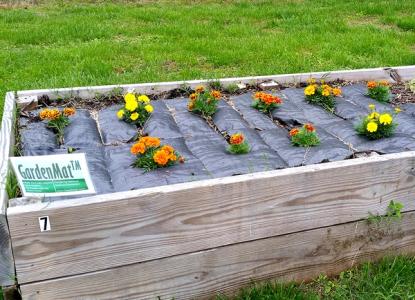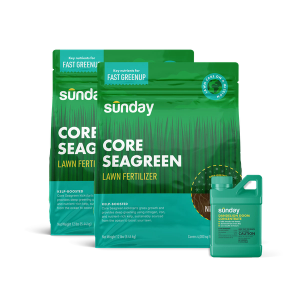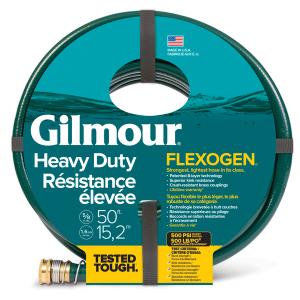The benefits of rain barrels
Rain barrels are an easy way to reuse water, reduce runoff, and help prevent soil erosion. They can also help prevent trash, debris, and important nutrients from being washed into sewer systems or nearby waterways, which can impact local water quality. The greatest benefit of rain barrels is that they create an alternate source of water to hydrate your yard instead of using sprinklers or freshwater. This will create a smaller footprint and lower your water bills. Also, plants prefer rainwater. They are made to absorb and work with rainwater rather than the treated tap water from your hose that is often hard and contains additives like chlorine.
Sunday Tip:
While rainwater is better for plants, it isn’t potable for people. Water from rain barrels can contain pathogens, dust, fecal contamination from roofs, or heavy metals. Remember, it is not drinking water so be sure to only use it on non-edible plants.
First, check for local regulations
Before you invest in rain barrels this season, make sure there aren’t any local restrictions. Some states, counties, or cities have restrictions concerning whether it is legal to harvest rainwater, or may restrict harvesting during certain times of the year. Other states require homeowners to register their rain barrels with the state if over a certain storage capacity (typically approx. 100 gallons). Some states also have regulations concerning the amount of roof water that can be collected, so be sure to check with your state and county for local details.
How to set up your rain barrels
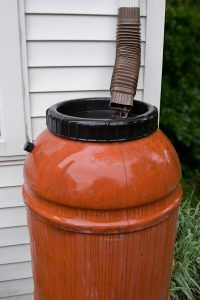
Select a location
Place rain barrels under downspouts to collect water from the roof. Make sure the downspout you use will collect enough water for your needs and that the barrel is easily accessible for use.
Use a sturdy base
Water is heavy. Be sure to place your barrel on a raised, sturdy base that can support the weight of a full barrel. This will also ensure that the hose attachment or spigot will fit at the bottom of the barrel, which will allow all the water to be used for irrigation.
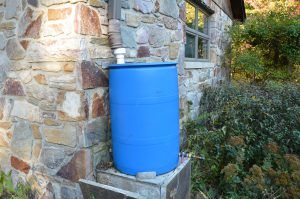
Keep it safe
Make sure barrels are sealed properly to ensure safety (kids and pets) and to prevent water-borne pests like mosquitoes. Only use containers that never held toxic material and are designed for water storage. Using an improper container can lead to toxicity, rust, mold, and other issues.
Collect debris
Use an inlet with a screen or a diverter to collect any debris (leaves, twigs, feathers, bugs, etc.) that may flow in from the roof.
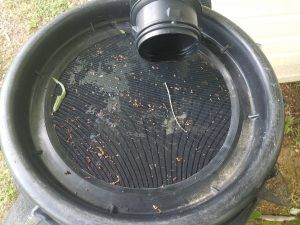
Redirect overflow
Set up your barrels to direct overflow rainwater into a rain garden, toward the base of a nearby tree, or onto another appropriate surface to keep water away from the house and away from any edible plants.
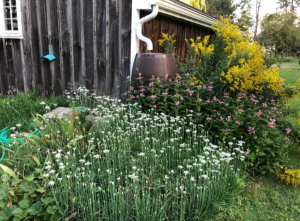
How to maintain your barrel
Clean your barrel regularly by removing debris after every heavy rain event. Completely empty and clean your barrels at least once a year to prevent algae, debris buildup, and stagnant water.
How to store your barrels during the winter
Drain the barrel completely, clean with soap and water, dry, and store upside down/covered over the winter to avoid damage from freezing and thawing. Make sure to reattach the downspout when you remove the barrel so water continues to drain away from your house.
How rain barrels are part of the Sunday way
Reducing our potable water use is one of the best ways to help cultivate a more sustainable lawn. Not only will it lower our hydro footprint, but it will also reduce our water bills. Be sure to pair your rain barrels with wise watering practices and avoid these common watering mistakes to grow a lawn that is better for people, pets, planet, and your pocket book.
Cited sources
Rain barrels for water conservation. PSU Extension.
Rain barrels in the home landscape. UMN Extension.
Rain Barrels in Utah. USU Extension
Rain Barrels. Colorado State University.
Rain Water Harvesting. USU Extension.











